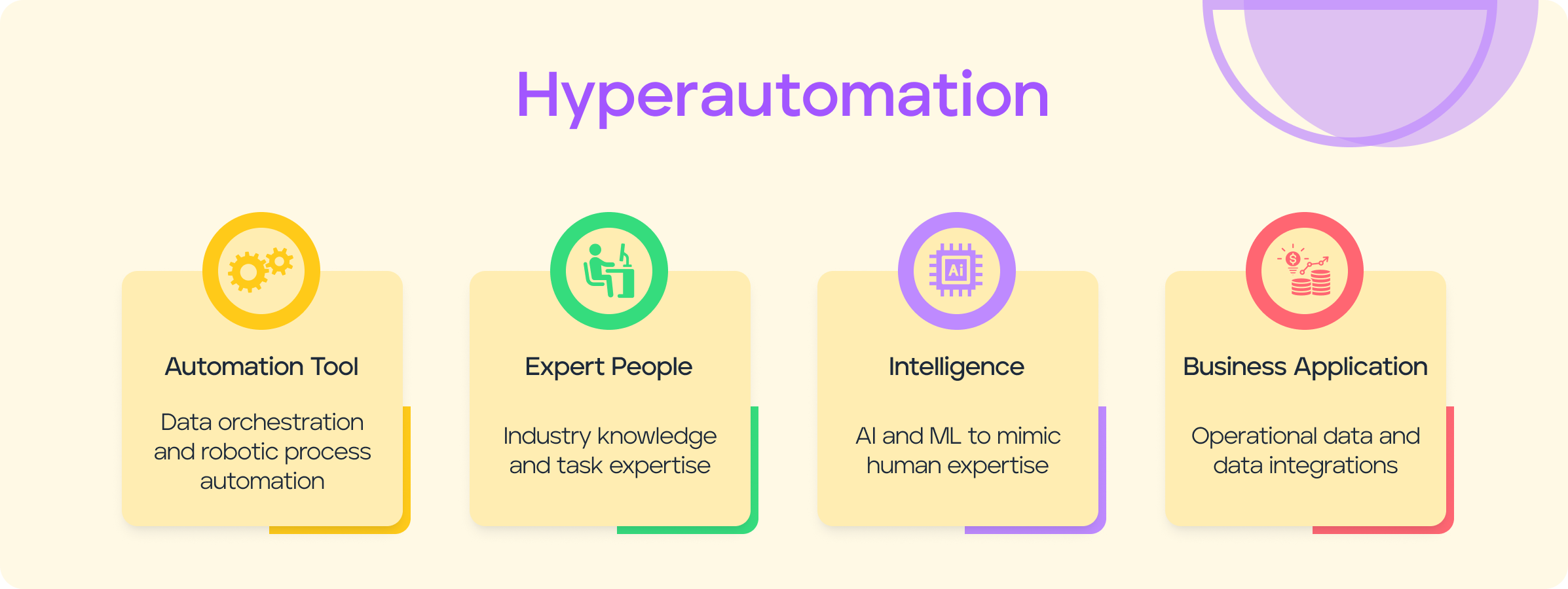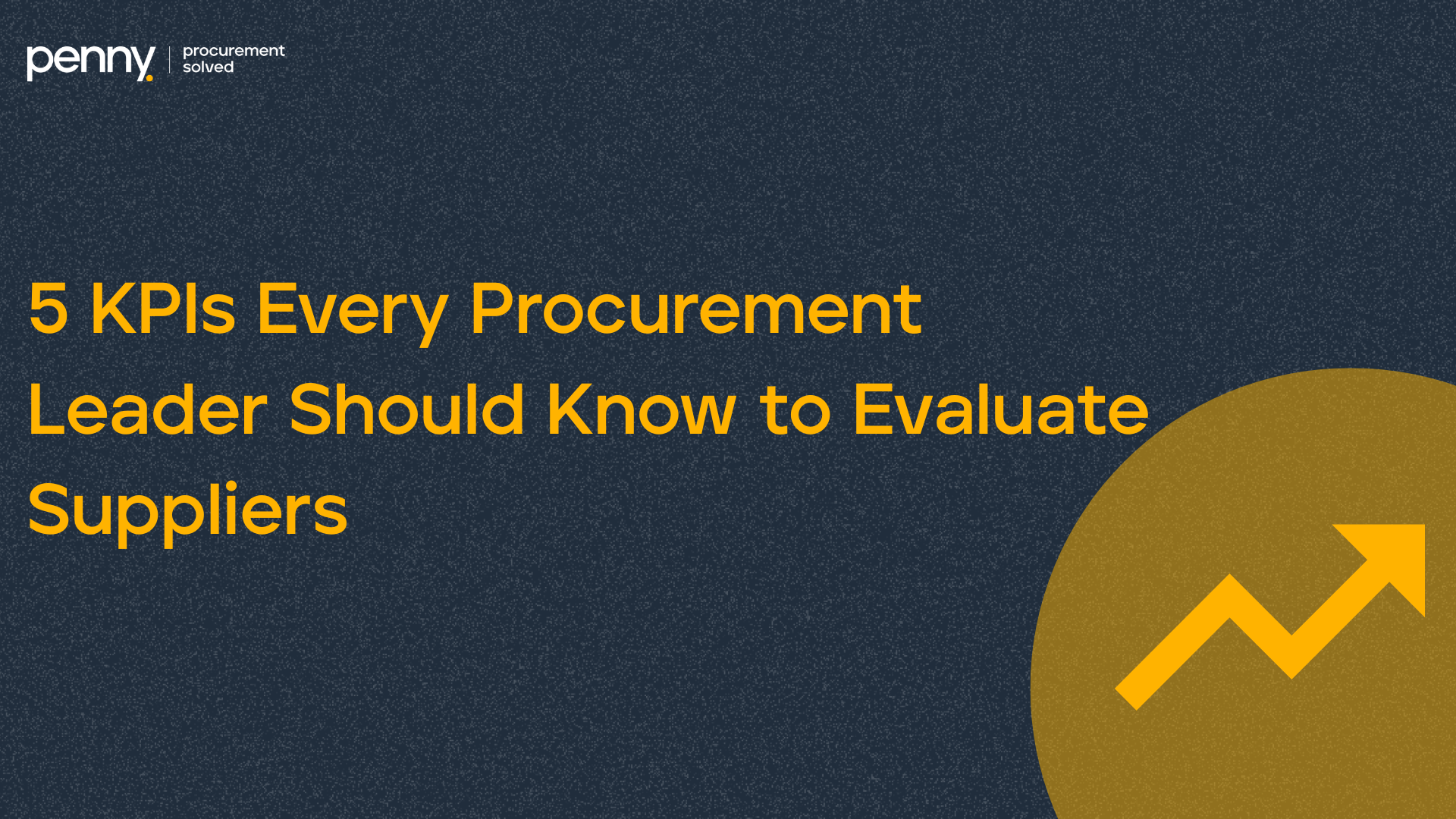A Call to Action for Procurement Leaders
The procurement landscape is undergoing a seismic shift, driven by transformative technologies like hyperautomation. This isn’t just a trend; it’s a must-have capability for any organization looking to compete and thrive. Penny Software, a leader in cloud-based Source-To-Pay solutions, is at the forefront of this revolution. This article aims to provide an in-depth look at why hyperautomation is essential for procurement’s future.
Unveiling Hyperautomation: Beyond the Hype to Operational Excellence in Procurement
The Gartner Hype Cycle for Procurement and Sourcing Solutions, 2023, identifies three pivotal themes shaping the future of procurement technologies: Hyperautomation, Data and Analytics, and Supplier Collaboration. This article zeroes in on Hyperautomation, offering a nuanced understanding of its myriad components and transformative impact on procurement processes.
Hyperautomation is not a mere buzzword; it represents a complex blend of advanced technologies that go well beyond traditional platforms such as Robotic Process Automation (RPA). While RPA has its role, it is increasingly considered as only a small part of the broad capabilities that hyperautomation provides. Integrating advanced technologies like AI, machine learning, and data analytics, hyperautomation offers a holistic, unified system that aims for complete operational efficiency.
So, what is Hyperautomation in its essence? It is a comprehensive mix of machine learning, packaged software, and various automation tools that significantly elevate work processes. For the procurement sector, hyperautomation equips organizations with intelligent mechanisms that foster more agile, efficient, and data-centric strategies. According to Gartner’s projections on IT Automation Trends, organizations that synergize hyperautomation technologies with redesigned operational processes are expected to reduce operational costs by up to 30% within the next two years.
In summary, hyperautomation is a disciplined, business-driven approach that enables organizations to rapidly identify, evaluate, and automate a wide array of both business and IT processes. As Gartner defines it, the orchestration of multiple technologies, tools, or platforms is key. This could involve a range of technologies like AI, machine learning, event-driven software architecture, RPA, Business Process Management (BPM)/iBPMS, integration platforms, low-code/no-code tools, and other types of decision, process, and task automation tools.
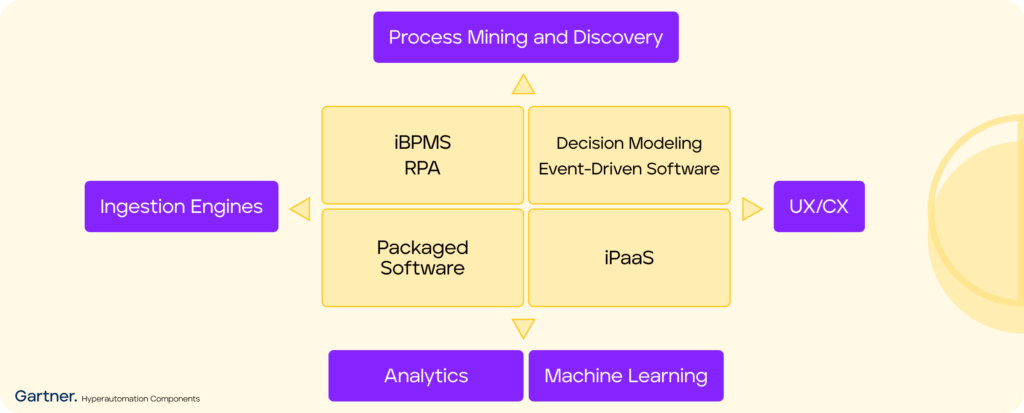
CX = customer experience, iBPMS = intelligent business process. Management suite, iPaaS = integration platform as a service, UX = user experience, RPA = robotic process automation Source: Gartner- Hyperautomation Components
Assembling the Ideal Hyperautomation Team for Procurement Excellence: A Data-Driven Approach
Successfully implementing hyperautomation in procurement requires the strategic formation of a specialized, multidisciplinary team that can seamlessly integrate technological advancements with core procurement functions.
The Multidisciplinary Team: Backed by Research
A McKinsey report states that organizations with cross-functional teams are 1.5 times more likely to experience revenue growth than those without. These teams combine various expertise, from software development and analytics to procurement strategy, each contributing to an agile and more holistic approach.
The Case for Multidisciplinary Teams over Traditional Teams
In traditional setups, the technology and procurement teams often operate in silos, limiting the scope for innovation. In contrast, multidisciplinary teams work towards a unified goal, capitalizing on each member’s expertise. A Deloitte study found that organizations employing such teams reduced their procurement-related operational costs by up to 20%, underscoring the value of integrated approaches.
Strategy and Tool Selection: Aligning with Organizational Goals
Selecting appropriate hyperautomation tools is not a one-size-fits-all endeavor. According to Gartner’s IT Automation Trends, organizations that effectively integrate hyperautomation technologies with a redesign of operational processes stand to lower operational costs by 30% within two years.
Prioritizing Automation and Long-Term Planning
The criteria for automation should be based on key performance indicators and organizational goals. For example, the decision to automate supplier risk assessments should be backed by data showing how this move aligns with corporate objectives. A Forbes article suggests that the most successful hyperautomation projects are those that fit into a multiyear plan, providing the scope for iterative improvements based on evolving technologies and market dynamics.
Monitoring, Evaluation, and Iterative Improvements
Organizations must set baseline metrics for each goal, tracking performance at set intervals—30, 90, 180, and 365 days post-implementation. Harvard Business Review cites that companies that apply data-driven evaluation methods to their automation projects are 6% more profitable than those that don’t.
A Focus on Continuous Improvements
As per a PwC study, organizations that consistently reassess and refine their objectives with regard to hyperautomation experience a 15% improvement in procurement efficiency metrics, including cost savings, supplier quality, and internal user satisfaction.
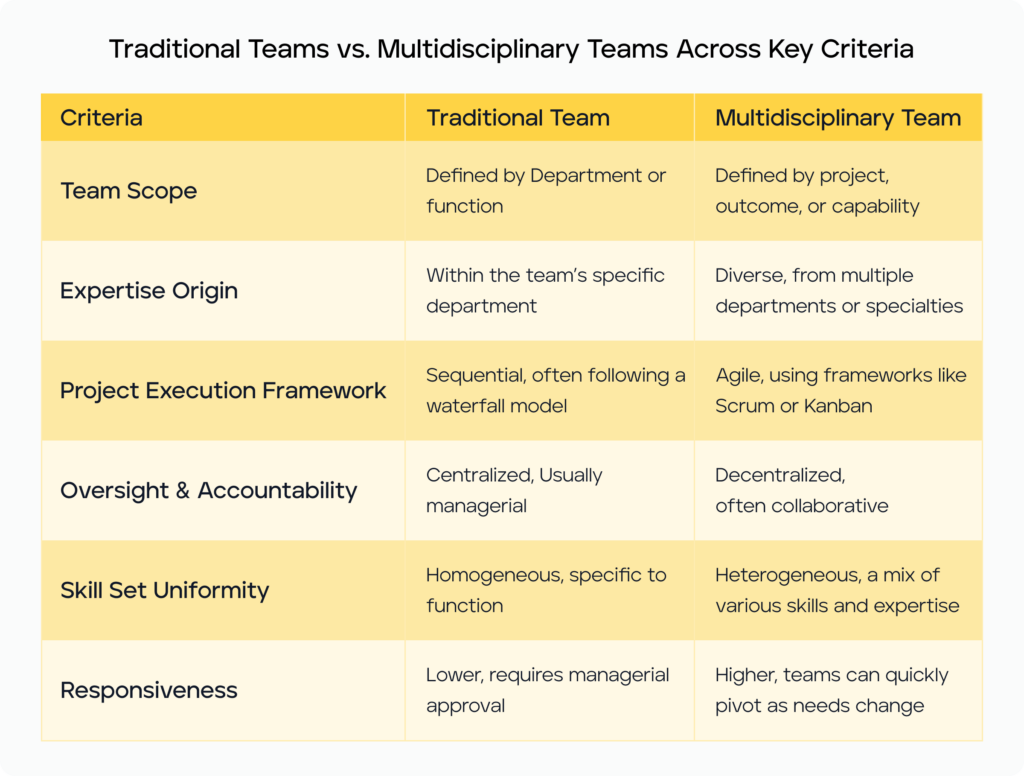
Determining and Measuring Business Goals for Hyperautomation in Procurement
After fine-tuning your multidisciplinary team focused on hyperautomation, the next crucial step is outlining the business goals you aim to achieve. Calculating the return on investment (ROI) for hyperautomation in procurement isn’t straightforward but is essential for decision-making at various stages. These benefits can manifest as revenue improvement, cost reduction, sales optimization, productivity enhancement, better customer experiences, or more accurate forecasting. Such outcomes can be realized through various means including fostering innovation, increasing business agility, and enabling digital efficiency.
Setting Metrics and Goals:
Link Each Initiative to Outcomes: At the project’s inception, clearly define the metrics that will indicate the success of each automation initiative. For instance, if your goal is cost optimization, then metrics could include a reduction in procurement costs or increased contract compliance.
Use SMART Criteria: Metrics should be Specific, Measurable, Achievable, Relevant, and Time-bound. This ensures they can be precisely tracked and correlated to tangible returns.
Engage Employees: Include metrics for employee engagement such as skills training or attrition rates. These can provide insights into how the automation initiatives are affecting your workforce.
Contract and Vendor Management: Ensure that your ROI considerations are part and parcel of the contracting phase and vendor management.
Let’s now delve into specific business outcomes that can be realized by applying hyperautomation in the procurement sector.
- Cost Optimization: Hyperautomation facilitates better vendor selection, substantially reducing procurement costs. Dell Technologies, for example, experienced a 30% cost reduction by automating its vendor selection.
- Contract Compliance: Automation in managing contracts ensures legal risks are minimized and terms optimized. Coca-Cola attained a 98% compliance rate post-automation.
- Speedy Approvals and PO Creation: Streamlining workflows can result in quicker purchase orders. Unilever reduced its PO creation time from 3 days to hours.
- Inventory Management: Real-time data and improved accuracy minimize overstock and stockouts. Amazon’s hyperautomated warehouses are case in point.
- Sustainable Procurement: Automation can efficiently track supplier sustainability metrics. IKEA’s drive for 100% sustainability by 2030 leverages this.
- Enhanced Supplier Relationship Management (SRM): Ford Motor Company utilizes automated dashboards for continuous evaluation of supplier performance.
Where Hyperautomation Really Shines: Procurement Use Cases
As the Gartner Hype Cycle articulates, hyperautomation offers transformative opportunities across multiple procurement areas. Let’s delve into the profound capabilities it brings to specific aspects of procurement, each significantly enriched by hyperautomation.
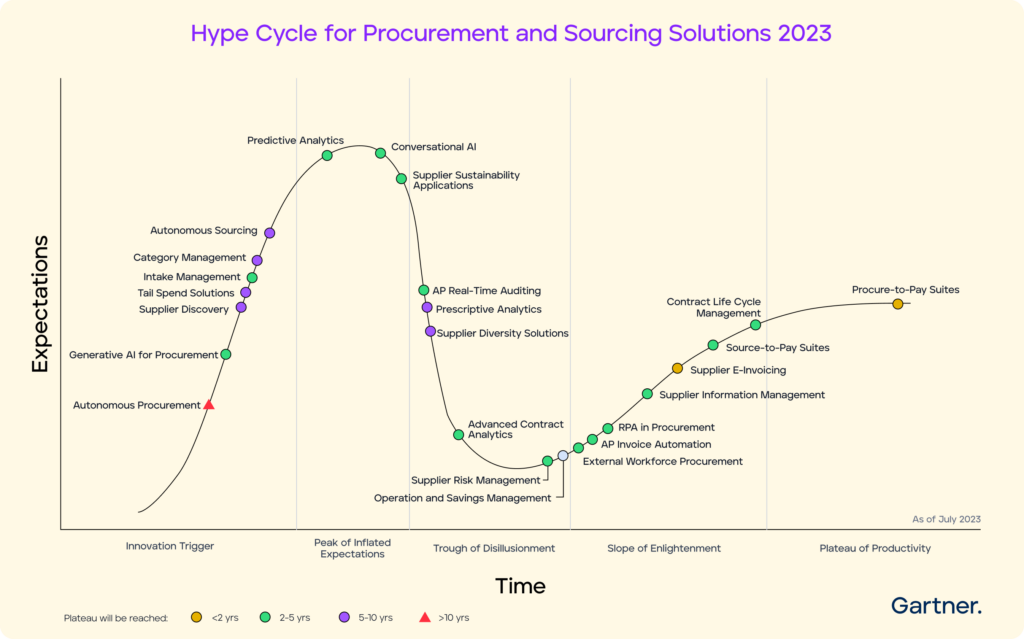
Advanced Supplier Lifecycle Management: Beyond Onboarding
Automating supplier onboarding is just the tip of the iceberg. Hyperautomation enables ongoing, adaptive evaluations based on continually updated compliance and performance metrics. For instance, process mining tools can extract data to assess the effectiveness of supplier interactions and adherence to contract terms. Remedial actions, like compliance audits or contract renegotiations, can then be automatically initiated by Robotic Process Automation (RPA).
Spend Analytics and Optimization: The Evolution
In an era marked by inflation and economic volatility, conventional cost-saving measures may fall short. Hyperautomation elevates spend analytics by employing real-time, AI-driven algorithms that do more than flag unnecessary expenditures. These advanced systems recommend optimized buying strategies rooted in comprehensive market analysis, thus broadening the scope of procurement beyond mere cost-cutting to value generation.
Next-Level Contract Creation and Maintenance: Self-Regulating Agreements
Smart contracts are revolutionizing the landscape of legal agreements. Enabled by advanced technologies such as blockchain, these contracts automatically update clauses based on real-time KPIs or external market indices. Natural Language Processing (NLP) tools can also scrutinize these agreements, detecting any unfavorable or non-compliant terms to facilitate quicker approval cycles.
Autonomous Sourcing: A Paradigm Shift
Autonomous sourcing isn’t merely automated; it’s optimized. It uses machine learning and data analytics to streamline the sourcing process, from event creation to supplier selection. It incorporates diverse data sets—both internal and external—to improve decision-making. For example, machine learning algorithms can analyze bids in the context of market conditions, supply chain constraints, and even environmental, social, and governance (ESG) criteria. This data-driven approach not only increases efficiency but also frees up procurement staff to focus on strategic activities like supplier relationship management.
Dynamic Risk Analysis and Tail Spend: Proactive and Comprehensive
One of hyperautomation’s most significant contributions to procurement is its capacity for dynamic risk analysis. Constantly updated data feeds, ranging from geopolitical events to supplier solvency, feed into real-time risk assessment models. Meanwhile, tail spend—those pesky, low-volume, non-strategic purchases—can also be better managed. Automated analytics tools can identify these areas, allowing for more complete and strategic procurement decisions.
Complex Scenario and “What-If” Analysis: Decisioning Reimagined
Manual complex scenario analysis can be cumbersome and prone to errors. Hyperautomation simplifies this by employing advanced analytics to simulate various “what-if” scenarios. This not only alleviates the manual burden but also enables procurement professionals to build skills in more strategic areas, such as negotiation tactics.
Here are 3 recommendations to follow:
1. Seize Low-Hanging Fruits: Start with processes that are easiest to automate for immediate gains.
2. Unbundle Legacy Systems: Transition to flexible, modular platforms that can quickly adapt to new technologies.
3. Invest in Future-Proof Solutions: Penny Software for instance, could be a strong candidate as it offers extensive capabilities in hyperautomation and is geared towards enhancing team collaboration.
Penny: Your Go-To Platform for Procurement Hyperautomation
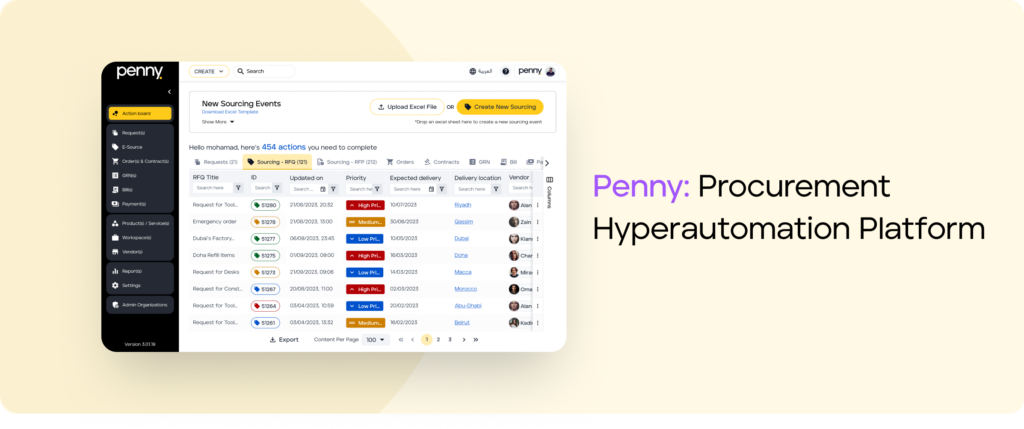
In the fast-evolving landscape of procurement, having an agile and robust platform is crucial for gaining a competitive edge. Penny Software, recognized as one of the 100 most innovative procurement solutions globally by Procure Tech & Kearney Consulting, serves as your digital nerve center to optimize every facet of your procurement operations.
- Effortless User Experience: Penny’s intuitive design makes it easy for everyone on your team to engage and perform tasks efficiently.
- Flexible Customization: Penny’s modular services let you tailor your procurement environment to your organization’s unique needs.
- Real-time Analytics: Make data-driven decisions effortlessly with Penny’s advanced analytics.
- Unmatched Oversight: Gain full visibility into your procurement cycle, enhancing control and compliance.
Why Penny Software is Unbeatable
Penny Software isn’t just a tool; it’s a strategic asset designed to integrate seamlessly with your procurement strategy, demystifying the complexities of spend analysis and catalyzing your move towards hyperautomation. With its innovative features and proven effectiveness, Penny is the optimal choice for organizations serious about transforming their procurement operations and realizing unparalleled ROI.
Preparing for the Future
In a rapidly changing business landscape, where resilience and efficiency are more important than ever, hyperautomation is not optional; it’s essential. Penny Software positions itself as an indispensable partner in this journey, offering not just advanced tools but strategic insights.
Upcoming eBook Alert
This article serves as a precursor to an upcoming eBook that delves into multiple dimensions of modern procurement, including a dedicated chapter on hyperautomation. This comprehensive guide will consolidate various perspectives, offering a treasure trove of actionable insights for procurement professionals.
